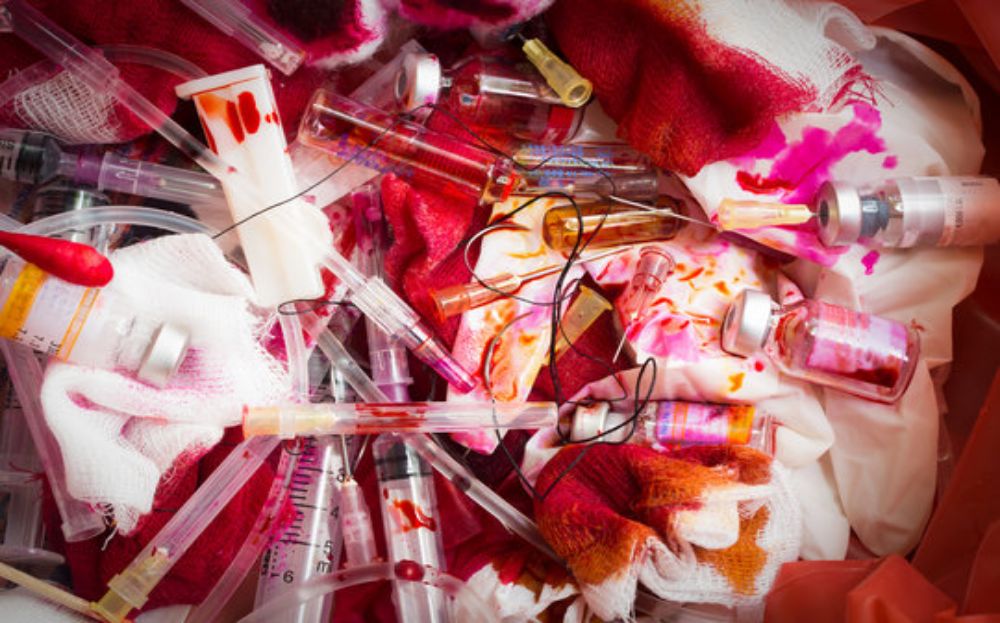Common Bio-Medical Waste Treatment Facility (CBMWTF)
Purpose
- To reduce the risk of damage to healthcare personnel, the population, and the environment.
- To reduce the amount of waste.
- To ensure the segregated collection of waste.
- To establish proper waste collection sites in medical departments and in hospitals.
- To establish a proper in-house transportation route.
- To recover waste to the greatest extent possible.
- To dispose of waste in an environmentally and health-friendly way.
Why do we have to devote much more attention to the hazardous Bio-Medical waste disposal?
Waste produced in the healthcare sector may in significant part be considered as hazardous waste. The health and environmental risks caused by this waste can be well defined and the conditions for its management can be clearly separated from those of the waste generated in other areas. According to the position statement by the United Nations World Health Organization (WHO), in 2000 the improper treatment of medical waste (primarily the use of infected hypodermic needles and syringes) caused the following infections worldwide:
Hepatitis B
21 Million Infections
Hepatitis C
2 Million Infections
HIV
260,000 Infections
The above figures show how relevant appropriate medical waste treatment is. According to the WHO directive, hazardous waste should be processed as near to its place of generation as possible. The risks involved in the transportation of hazardous waste are large and the risk factor found in some materials (e.g. those that areinfectious) increases daily. Suitably located and equipped waste disposal facilities can minimize the need to transport hazardous materials. (WHO publication, 2004).

A lot of the waste from hospitals is infectious biological material or objects, which although they are considered “communal” waste, are in fact contaminated. These latter items include textiles, bandages, syringes, and other objects exposed to infection through contact with patients. Very much of the waste from hospitals is made up of special surgical instruments, such as surgical implants and other implements employed during operations. The disposal of medical waste poses numerous questions, the first of which is : How can medical waste be categorized?
Types of Bio-medical Waste
Infectious Waste
Infectious waste is that which is suspected of containing pathogens (bacteria, viruses, parasites, or fungi) in a sufficiently large quantity or concentration to result in disease in susceptible hosts.
- Cultures and stocks of infectious agents from laboratories;
- Waste from operations and autopsies on patients with infectious diseases (e.g. body tissues, and materials or instruments having come into contact with blood or other body fluids);
- Waste originating from infected patients in isolation wards (e.g. feces and urine, dressings from infected or surgical wounds, clothing that is heavily soiled with blood or other body fluids);
- Waste having come into contact with infected hemodialysis patients (e.g. dialysis equipment such as tubing and filters, disposable towels, gloves, aprons, laboratory coats, and gowns);
- Infected animals from laboratories.

Pathological Waste
Infectious materials containing dead tissue may conceal especially dangerous and/or communicable infectious agents. Such waste includes blood, body fluids, tissues, organs, body parts, human fetuses, and animal carcasses. A subcategory of pathological waste is anatomical waste, which consists of identifiable human or animal body parts, healthy or otherwise.

Sharps
Sharps are objects sharp enough to cut or puncture the skin, e.g. knives, scalpels and other blades, infusion sets, needles, hypodermic needles, saws, broken glass, nails, etc. They can transmit infections directly into the bloodstream. Sharps are generally treated as highly hazardous medical waste regardless of whether they are contaminated or not. Regarding sharp waste, special consideration must be paid to: infusion, transfusion, and perfusion sets; butterfly needles; cannulas; disposable scalpel blades and razors; hemodialysis sets; laboratory slides; broken glass containers (bacteriological and clinical laboratories); ampoules containing solution residues, etc.

